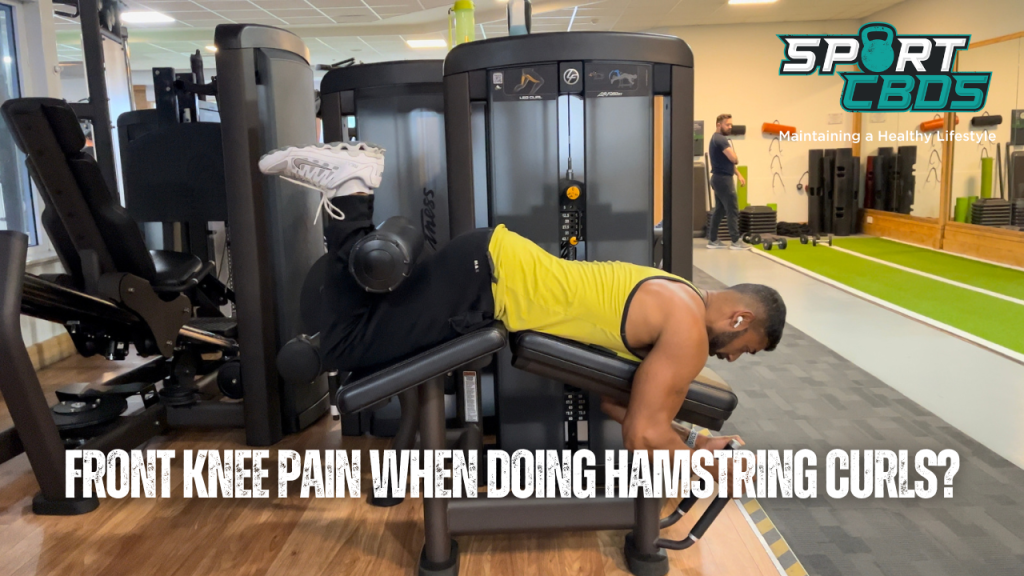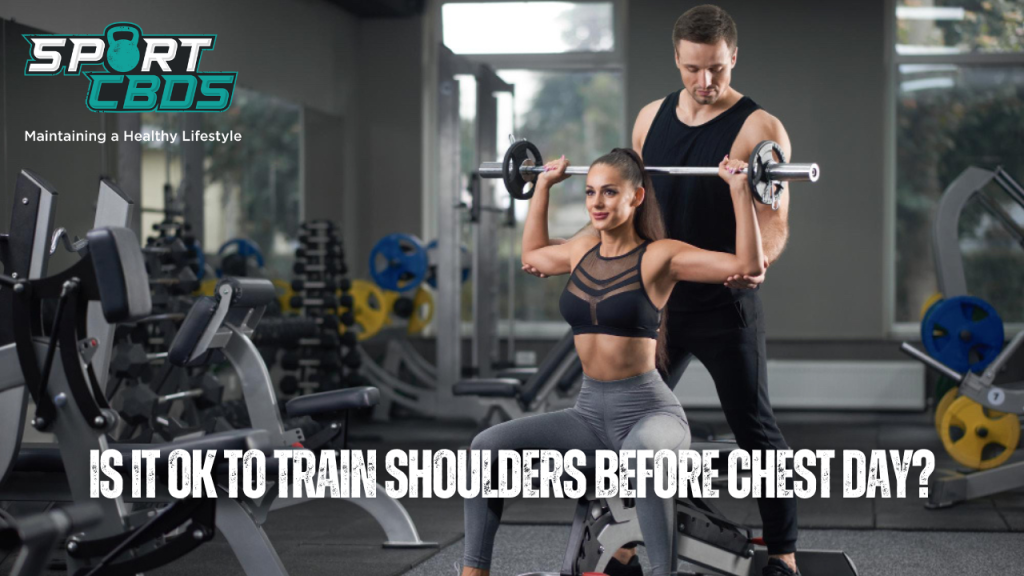
Understanding and Overcoming Front Knee Pain When Doing Hamstring Curls
Experiencing front knee pain when doing hamstring curls is a common issue faced by many fitness enthusiasts and athletes.
This discomfort can significantly hinder your workout routine and overall progress. Understanding the causes and solutions for this type of knee pain is crucial to ensure a safe and effective exercise regimen.
Hamstring curls are a popular exercise targeting the muscles at the back of your thigh. However, improper execution or overuse can lead to front knee pain, which can be a symptom of a more serious underlying condition.
This article aims to provide a comprehensive understanding of the causes, prevention strategies, and treatment options for front knee pain when doing hamstring curls.
Why Do I Get Front Knee Pain When Doing Hamstring Curls?
Front knee pain when doing hamstring curls is a common issue that can stem from various factors. Incorrect form or technique, such as misaligned knees or excessive weight, can put undue strain on the knee joint, leading to pain. Overuse or strain from intensifying workouts too quickly can also cause discomfort. Pre-existing conditions like arthritis or meniscus tears can exacerbate knee pain during hamstring curls. Even a Baker’s cyst, a fluid-filled sac behind the knee, can contribute to the problem. To prevent and manage this pain, it’s essential to maintain proper form and technique, warm up and cool down properly, strengthen supporting muscles, and allow adequate rest and recovery. Persistent knee pain should be addressed with professional medical advice to determine the cause and appropriate treatment, which may include physical therapy, medications, injections, or even surgery.
Understanding the Knee and Hamstring Muscles
The knee is a complex joint involving several components, including bones, ligaments, tendons, and muscles. It plays a crucial role in movements such as walking, running, and jumping. The front of the knee, also known as the anterior knee, is primarily made up of the patella (kneecap) and the patellar tendon.
Hamstring muscles, located at the back of your thigh, are responsible for bending your knee and extending your hip. These muscles are heavily engaged during hamstring curls. However, if not performed correctly, hamstring curls can put undue stress on the knee joint, leading to pain and discomfort.
The relationship between hamstring curls and knee stress is multifaceted. Hamstring curls primarily target the hamstring muscles, but they also engage other muscles and joints, including the knees. When you perform a hamstring curl, your knee joint acts as the pivot point. If your form is incorrect or if the weight is too heavy, it can lead to excessive pressure on the knee, causing pain.
Understanding the basic anatomy of the knee and the role of hamstring muscles in knee movement is the first step in addressing front knee pain when doing hamstring curls. In the following sections, we will delve deeper into the causes of this pain and discuss various prevention and management strategies.
Causes of Front Knee Pain When Doing Hamstring Curls
There are several potential causes of front knee pain when performing hamstring curls. Understanding these causes can help you take the necessary steps to prevent and manage this discomfort.
Incorrect Form or Technique: One of the most common causes of knee pain during hamstring curls is incorrect form or technique. If your knees are not aligned properly or if you’re using too much weight, it can put excessive strain on your knee joint, leading to pain and potential injury.
Overuse or Strain: Overuse or strain of the hamstring muscles can also lead to knee pain. This often happens when you increase the intensity or frequency of your workouts too quickly, not giving your muscles enough time to recover and adapt.
Pre-existing Conditions: Certain pre-existing conditions, such as arthritis or meniscus tears, can make you more susceptible to knee pain during hamstring curls. These conditions can cause inflammation and discomfort in the knee joint, which can be exacerbated by exercises like hamstring curls.
Baker’s Cyst: A Baker’s cyst, also known as a popliteal cyst, is a fluid-filled sac that forms behind the knee. It can cause pain and stiffness in the knee, particularly during bending movements like hamstring curls.
Related: Why Do I Feel Deadlifts in My Upper Back? Unraveling the Mystery
Prevention and Management Strategies
Preventing front knee pain when doing hamstring curls often involves a combination of proper form, adequate rest, and targeted strength training. Here are some strategies to help you manage and prevent this discomfort:
Proper Form and Technique: Ensuring proper form and technique when performing hamstring curls is crucial. This includes keeping your knees aligned, using a manageable weight, and moving through the full range of motion. If you’re unsure about your form, consider working with a fitness professional who can provide guidance and feedback.
Warm-up and Cool-down Exercises: Incorporating warm-up and cool-down exercises into your workout routine can help prepare your muscles for exercise and aid in recovery, reducing the risk of knee pain.
Strength Training for Supporting Muscles: Strengthening the muscles that support your knees, such as your quadriceps and glutes, can help reduce the strain on your knee joint during hamstring curls.
Rest and Recovery: Giving your muscles adequate time to rest and recover is essential for preventing overuse injuries. This includes taking rest days between intense workouts and listening to your body’s signals for rest.
Remember, if you’re experiencing persistent knee pain, it’s important to seek professional medical advice. A healthcare provider can help determine the cause of your pain and recommend appropriate treatment options.
Treatment Options
If you’re experiencing front knee pain when doing hamstring curls, there are several treatment options available. The best approach will depend on the underlying cause of your pain, as well as your overall health and fitness goals.
Physical Therapy and Exercises: Physical therapy can be highly effective in treating knee pain associated with hamstring curls. A physical therapist can provide targeted exercises to strengthen your knee and surrounding muscles, improve your flexibility, and correct any issues with your form or technique.
Medications and Injections: Over-the-counter pain relievers and anti-inflammatory medications can help manage knee pain. In some cases, your healthcare provider may recommend injections of corticosteroids or hyaluronic acid to reduce inflammation and improve knee function.
Surgical Options: If your knee pain is due to a serious underlying condition, such as a torn meniscus or severe arthritis, surgery may be necessary. Surgical options can range from minimally invasive arthroscopic procedures to knee replacement surgery.
What About Other Recovery Methods?
CBD, or Cannabidiol, has been gaining attention for its potential to alleviate various types of pain, including front knee pain experienced during hamstring curls. CBD is believed to interact with the body’s endocannabinoid system, which plays a role in regulating pain and inflammation.
A study published in the European Journal of Pain showed that CBD could help lower pain and improve sleep for people with chronic pain conditions. Therefore, using CBD products, like those available at Sport CBDs Store, may provide relief for individuals experiencing knee pain during hamstring curls.
However, it’s important to consult with a healthcare provider before starting any new treatment regimen. For more information on CBD and its potential benefits, check out this Beginner’s Guide to CBD.
Related: Can I Build Big Legs Without Squats or Deadlifts? A Step-by-Step Guide
FAQs
Can hamstring curls cause knee pain?
Yes, hamstring curls can cause knee pain if they’re performed incorrectly or if you have a pre-existing knee condition. Overuse, strain, and improper form can all contribute to knee pain during this exercise.
How to do hamstring curls without hurting knees?
To perform hamstring curls without hurting your knees, ensure proper form and technique. This includes keeping your knees aligned, using a manageable weight, and moving through the full range of motion. Warm-up before exercising and cool down afterwards can also help prevent knee pain.
Why do my knees hurt when curling?
Knee pain when curling can be due to several factors, including incorrect form, overuse, strain, or a pre-existing knee condition. If your knees hurt when curling, it’s important to evaluate your form and consider seeking advice from a fitness professional or healthcare provider.
Are seated hamstring curls bad for your knees?
Seated hamstring curls can put a lot of stress on your knees, especially if they’re performed incorrectly. However, with proper form and technique, they can be a safe and effective exercise for strengthening your hamstrings.
Remember, if you’re experiencing persistent knee pain, it’s important to seek professional medical advice. A healthcare provider can help determine the cause of your pain and recommend appropriate treatment options.
Final Thoughts…
Front knee pain when doing hamstring curls can be caused by a variety of factors, including incorrect form, overuse, strain, and pre-existing knee conditions. Understanding the basic anatomy of the knee and the role of hamstring muscles in knee movement is crucial in addressing this issue.
Prevention strategies such as ensuring proper form and technique, incorporating warm-up and cool-down exercises, strengthening supporting muscles, and allowing adequate rest and recovery can help manage and prevent knee pain. Treatment options range from physical therapy and exercises to medications, injections, and in some cases, surgery.
Remember, persistent knee pain should not be ignored. If you’re experiencing ongoing discomfort, it’s important to seek professional medical advice. A healthcare provider can help determine the cause of your pain and recommend appropriate treatment options.
Do you feel front knee pain when doing hamstring curls? Have our tips been beneficial to your training? We’d love to hear your feedback, so please share your thoughts in the comments section below.
If you’re a sports enthusiast who utilizes CBD for optimal recovery after intense workouts, then you’ve found your tribe. Welcome to Sport CBDs, where we push our limits in training and prioritize recovery in the most effective way possible.
We regularly share workout routines on our YouTube channel and offer a range of health and fitness products designed to give you that competitive edge.
Why not explore the high-quality CBD products we proudly feature on our site? Visit the Sport CBDs Store by clicking here. In addition to CBD, we also offer an array of fitness clothing and yoga accessories to complement your active lifestyle.
Until next time, we wish you the best in your fitness journey. Remember, your progress is our passion. Stay strong and keep pushing!

Lee
Founder – Sport CBDs
Featured Image Attribution – N/A

